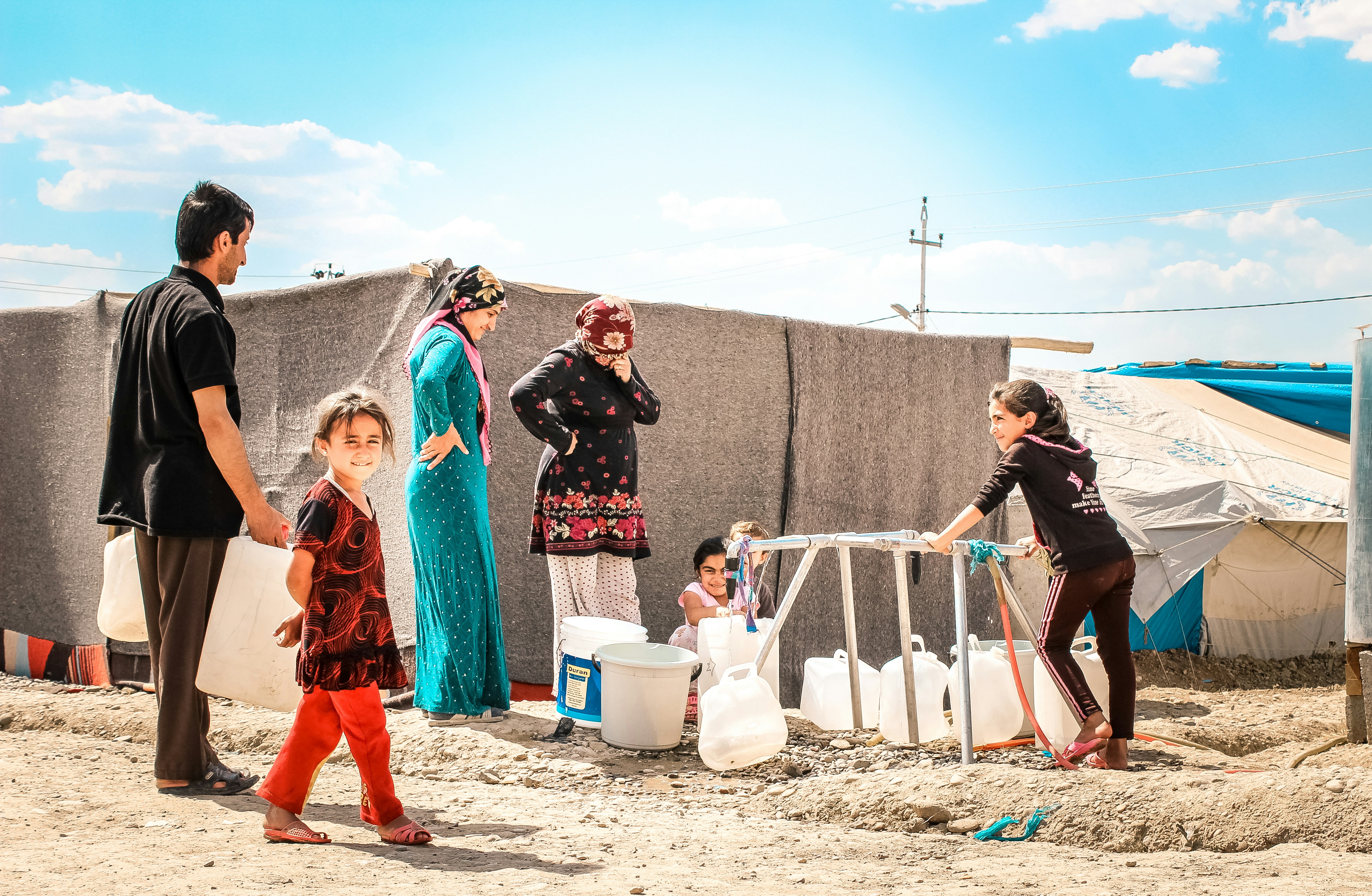New Travel Ban Proposals: A Closer Look at Trump’s Targeted List of 43 Countries

Photo by Brian Wangenheim on Unsplash
The Proposed Travel Ban
The recent proposals for a travel ban introduced during the Trump administration have sparked significant attention and debate, primarily due to their broad scope compared to earlier restrictions. These new measures are targeting a list of 43 countries, which marks a notable expansion from previous travel bans that were limited in focus. The overarching rationale presented by the administration hinges on national security concerns, with immigration policies being a prominent aspect of the administration’s agenda.
The implications of these proposed visa restrictions extend far beyond mere travel logistics. They have the potential to reshape diplomatic relations between the United States and the affected nations, as many countries on the list hold strategic importance globally. The expanded scope raises questions about the United States’ commitment to international collaboration and its reputation as a destination for visitors and scholars alike. Such measures may deter tourism, business travel, and academic exchange—factors that have contributed to the United States’ economy and cultural diversity.
Understanding the Draft List
The proposed travel ban list circulating within the current administration categorizes countries into three distinct tiers: red, orange, and yellow. This classification system is designed to address varying levels of perceived risk associated with each nation, particularly concerning security and immigration policies. The tiered approach creates a framework through which visa restrictions can be tailored to the specific conditions and potential threats that each country presents.
Countries labeled as “red” are subjected to the most stringent visa restrictions. These nations are often identified due to ongoing conflicts, high levels of terrorism, or significant governmental instability. Citizens from red-tier countries face severe limitations on their ability to obtain travel visas, effectively placing them at the highest risk for being barred from entering the United States. This classification is a reflection of global security assessments and indicates a heightened scrutiny for applicants wishing to travel from these regions.
The “orange” tier encompasses nations that, while not classified as critical threats, still present notable security concerns. Visa restrictions for these countries may include additional screening measures or more extended processing times. Applicants from orange-tier nations may find that their visa applications undergo more rigorous evaluations, reflecting the need for the U.S. to assess and mitigate potential risks associated with immigration from these areas.
Finally, the “yellow” tier indicates nations where security concerns exist but are deemed manageable. Citizens from these countries may have fewer visa restrictions, and the processing of travel documents tends to be expedited. Nevertheless, applicants from yellow-tier nations remain subject to specific protocols that align with the overarching objectives of national security.
This tiered system of visa restrictions illustrates the administration’s intent to create an organized approach to address immigration concerns while aiming to enhance the security framework related to foreign travel.
The ‘Red’ List: Countries Facing a Complete Travel Ban
The proposed travel ban under the Trump administration has brought considerable attention to the specific countries deemed as posing a risk to national security. Within this proposal, an official ‘red’ list has identified eleven countries facing a complete ban on entry into the United States. These countries include Syria, Iran, Libya, Yemen, Somalia, North Korea, Venezuela, Chad, Iraq, Sudan, and Mali. Each of these nations has been selected based on a multitude of factors, including their affiliations with terrorist organizations, internal conflicts, and inadequate control over their border security.
Syria has been embroiled in a civil war since 2011, leading to rampant instability and the proliferation of extremist groups. Iran’s government and its support for terrorism have historically contributed to its inclusion in visa restrictions. Libya, similarly, suffers from political chaos, enabling terrorist organizations to thrive amidst a lack of governance. Yemen’s ongoing conflict, driven by terrorist activities and humanitarian crises, further substantiates its position on the list.
Venezuela’s inclusion reflects concerns over its government’s ties to illicit activities and anti-American sentiments, which have gained prominence in recent years. North Korea is a persistent concern due to its nuclear ambitions and defiance against international norms. Though Chad and Sudan have been under scrutiny for their internal conflicts and terrorist groups, Iraq and Somalia face unique challenges related to territorial control and governance. Among these, countries such as Mali have been identified as breeding grounds for extremist groups.
The geopolitical implications of this ‘red’ list are extensive. Countries facing comprehensive travel bans may experience strained diplomatic relationships with the United States, potentially altering the dynamics of international collaborations and security measures. As the ramifications of these visa restrictions unfold, it is essential to consider the historical context of each nation to gain a deeper understanding of their classification and the associated international response.
The ‘Orange’ List: Countries with Restricted Visa Access
The ‘orange’ list constitutes a significant aspect of the newly proposed travel ban, encompassing ten countries that may be subjected to restricted visa access rather than an outright prohibition on entry. This category serves as a critical bridge between full bans and unrestricted access, highlighting a selective approach to visa regulations. Countries included in this list are assessed based on various security, political, and economic factors that could influence the safety and integrity of the United States.
Those affected by the visa restrictions could include individuals from nations where political instability, terrorism, or insufficient data sharing with U.S. authorities persists. However, despite these restrictions, there exists a notable exception for affluent business travelers looking to engage in commerce or investment opportunities. This delineation indicates an awareness of the importance of economic engagement, as the U.S. seeks to foster beneficial relationships while mitigating potential risks associated with unrestricted travel.
Notably, affluent travelers seeking business interests might be able to navigate this limited visa access through special provisions or expedited processing. The focus is likely to be on those who can demonstrate significant financial means and a defined purpose to their visit, allowing them to bypass some obstacles presented by the visa restrictions implemented on their home countries. As such, this nuanced stance reflects a calculated response to the global geopolitical climate while maintaining the essential economic dynamics associated with international business.
In viewing the ‘orange’ list through this lens, it becomes apparent that visa restrictions are not exclusively punitive but rather an attempt to balance national security concerns with the imperatives of international commerce. This strategy underscores how targeted policies can facilitate selective entry, creating a framework that could potentially be more effective than broad travel bans aimed at entire nations.
The ‘Yellow’ List: A Temporary Grace Period
The travel ban proposals under consideration by the Trump administration include a ‘yellow’ list comprising 43 countries, which signifies a temporary grace period for those deemed to require additional scrutiny. The implication of this designation is significant, as it offers affected nations a crucial window of 60 days to address specific security and immigration-related concerns raised by the United States. This opportunity extends beyond mere compliance with existing immigration laws; it encompasses a broad spectrum of issues including terrorism, lack of information sharing, and inadequate passport control measures.
During this period, countries listed on the ‘yellow’ list are encouraged to engage in dialogue with U.S. officials to better understand the expectations and requirements needed to avert future visa restrictions. The administration has emphasized that failure to make meaningful progress may lead to more severe penalties, including the possibility of complete travel bans. It is important for these nations to recognize that addressing the outlined deficiencies is not solely about meeting U.S. criteria but is also an essential step towards enhancing their own security measures and international standing.
Furthermore, the cooperation and efforts demonstrated by these countries could potentially ameliorate their travel relations with other nations, as improved security protocols are increasingly becoming a prerequisite for international travel. Countries that can establish effective security practices and transparent information-sharing mechanisms may find themselves better positioned not only in the United States but also in the global geopolitical landscape. Hence, the ‘yellow’ list serves both as a warning and as an opportunity for nations to reflect on their immigration policies and practices in relation to visa restrictions.
The Role of Diplomatic and Security Officials
The deliberations concerning the proposed travel ban involving 43 countries involves significant input from both diplomatic and security officials. Their roles are crucial in assessing the potential national security risks associated with foreign nations and determining the appropriate visa restrictions to be implemented. The process requires a comprehensive evaluation of each country’s political stability, economic conditions, and any existing threats that may arise from their populations. These assessments often lead to intense discussions among various stakeholders, each bringing unique perspectives and expertise to the table.
One primary focus of these discussions is to ensure that the descriptions of deficiencies in the designated countries are accurately portrayed and justified. Diplomatic officials stress the importance of maintaining strong international relations and are often cautious about how proposed restrictions may be perceived globally. They argue that any travel ban should be based on verified intelligence and cooperative dialogues to promote mutual understanding. Conversely, security officials may advocate for more stringent measures, emphasizing the need to protect the nation from potential threats. This divergence of opinions can lead to heated debates about the validity of the evidence presented against certain nations and the potential impact on diplomatic ties.
Feedback from State Department and Intelligence Agencies
The recent proposals for a travel ban targeting 43 countries have elicited a range of responses from officials within the State Department and various intelligence agencies. Key feedback has highlighted concerns regarding the visa restrictions that such a ban would impose and the potential repercussions on international relations. Officials have underscored that these travel limitations could hinder diplomatic efforts, as they may alienate countries that are vital partners in various global initiatives, including counterterrorism and trade.
Embassy personnel, in particular, have voiced apprehensions about the implications that broad visa restrictions could have on American citizens working abroad. They argue that these measures might not only restrict travel for foreign nationals but could also lead to reciprocal actions from other nations, limiting the travel opportunities of U.S. citizens. Furthermore, regional bureaus expressed concerns that a travel ban could disrupt the important cultural and educational exchanges that foster understanding and collaboration between nations.
Intelligence agencies have also pointed to the potential negative impact of shutting down open channels of communication. Effective intelligence-gathering often relies on the cooperation and goodwill of partner nations, and restrictive travel policies could jeopardize these relationships. By narrowing the parameters within which international collaboration occurs, the proposed travel ban may lead to a rise in anti-American sentiment, thereby compromising U.S. security interests rather than enhancing them.
In aggregate, the feedback from the State Department and intelligence agencies underscores the complexities inherent in implementing visa restrictions on a broad scale. The potential fallout from such a policy requires careful consideration, as it could significantly alter existing bilateral agreements and affect overall global stability.
Historical Context: Previous Travel Bans and Current Landscape
The travel ban proposals put forward during former President Donald Trump’s first term have roots in a complex historical context. Since the inception of the United States, immigration policies have frequently shifted in response to prevailing political, social, and economic climates. Specifically, Trump’s administration implemented significant travel restrictions that targeted several predominantly Muslim countries, consolidating a focus on national security and the perceived risks associated with immigration. The executive order originally issued in January 2017 enacted a blanket ban on citizens from seven countries, sparking widespread debate about its implications for human rights and freedoms.
The initial travel ban faced immediate legal challenges, which culminated in a series of revisions and court battles that continued throughout Trump’s first term. The final version, known as the Proclamation 9645, included visa restrictions for individuals from several nations, aiming to mitigate threats and enhance security. While the administration asserted the effectiveness of these measures in reducing potential terrorist activities, critiques highlighted the humanitarian issues stemming from such sweeping regulations.
In the current landscape, the new travel ban proposals targeting 43 countries seem to echo past sentiments while expanding the scope of restrictions. A key difference lies in the political and public response, now shaped by an ongoing discourse around immigration reform and human rights advocacy. Current proposals must navigate a landscape that is more vigilant about the implications of such policies, acknowledging the increasing scrutiny on governmental actions regarding immigration. They reflect not only the administration’s ongoing concerns over national security but also the opposing voices calling for a more inclusive approach to immigration. This requires a careful balance between security measures and the ethical considerations of visa restrictions impacting countless lives.
Potential Legal and Humanitarian Implications
The proposed travel ban by the Trump administration, targeting a list of 43 countries, raises significant legal and humanitarian concerns. One of the primary legal challenges revolves around the question of equal protection under the law. Critics argue that the travel restrictions may disproportionately affect individuals from particular regions, leading to allegations of discrimination based on nationality or religion. Such implications could be in direct violation of constitutional principles, inviting legal scrutiny and potential court challenges from advocacy groups and affected individuals.
Moreover, the humanitarian implications of visa restrictions cannot be overlooked. These bans may have profound effects on families, particularly those with members residing in or originating from the targeted countries. The division caused by a travel ban can lead to emotional distress and exacerbate existing familial struggles, impacting the well-being of those affected. Children separated from parents or siblings due to visa restrictions may face psychological challenges as they grapple with the uncertainty of reunification.
The impact on refugees and asylum seekers is equally troubling. Many individuals fleeing persecution, violence, or war in their home countries rely on the ability to secure safe passage to the United States or other nations. By instituting broad travel restrictions, the proposal could effectively close off avenues for these vulnerable populations, forcing them to remain in perilous situations. Human rights advocates emphasize that access to asylum is a vital protective mechanism within international law, and any limitation on this access undermines the core principles of humanitarian protection.
Ultimately, the proposed travel ban invites a complex interplay of legal challenges and humanitarian considerations that must be carefully navigated to respect both the rights of individuals and the obligations of the state.
Conclusion and Future Outlook
The recent proposals regarding visa restrictions affecting 43 countries have sparked a significant dialogue on immigration policy in the United States. These targeted measures are designed to address national security concerns while potentially influencing the international movement of people. As the legislative process unfolds, it remains imperative to examine both the immediate effects and the broader implications these changes may have on U.S. foreign relations and immigration policy.
Key points of discussion have centered around the rationale behind the selection of specific nations, the criteria used for these restrictions, and the potential impact on travelers. Stakeholders, including lawmakers, advocacy groups, and international partners, are expected to respond vigorously to these proposals. It will be crucial for policymakers to engage with these groups to address concerns and gather diverse perspectives that can inform a more balanced approach to immigration.
Public opinion is likely to play a significant role in shaping the future of these visa restrictions. Advocacy for more inclusive immigration practices is expected to rise, contrasting with calls for heightened security measures. The response from foreign governments will also be critical, as diplomatic relations may be affected by the perception of unfair treatment or discrimination against specific nations. As discussions continue, it will be essential to consider how these proposals align with the United States’ broader commitment to human rights and international cooperation.
Overall, the implications of this travel ban proposal extend beyond immediate policy changes; they influence the long-term trajectory of U.S. immigration policy and its position on the global stage. The upcoming legislative debates will inevitably shape the future dynamics of cross-border travel, community relations, and America’s identity as a nation of immigrants. Careful consideration and dialogue will be paramount to reach a resolution that balances the need for security with the values of openness and inclusivity.







